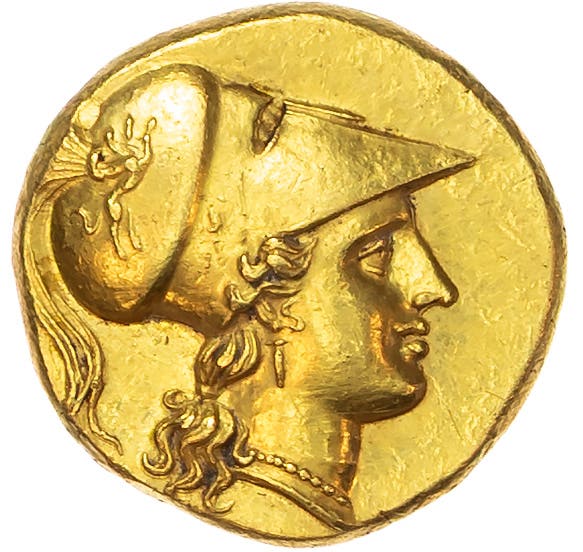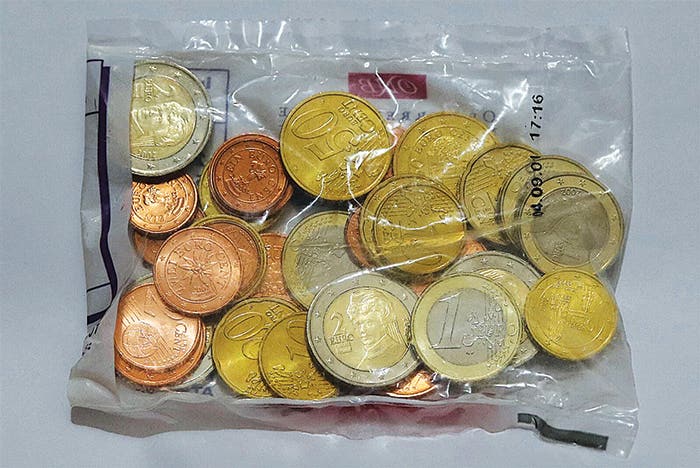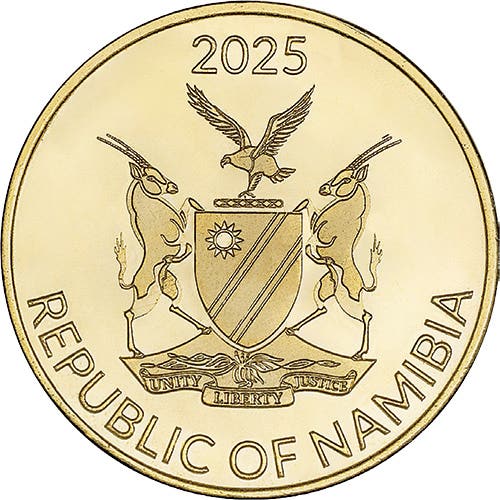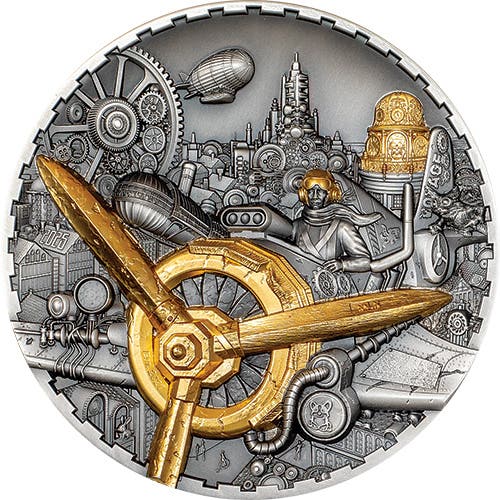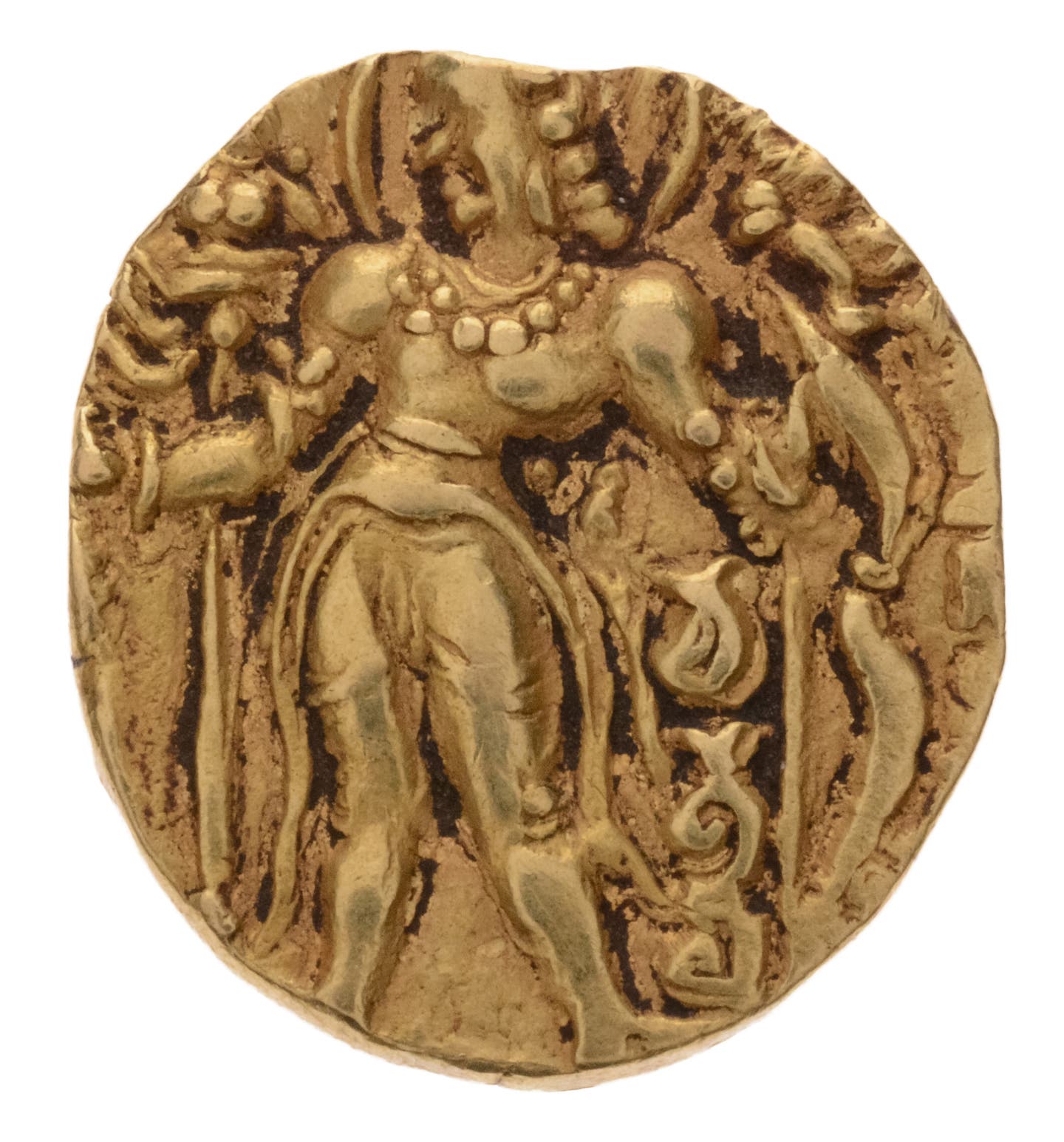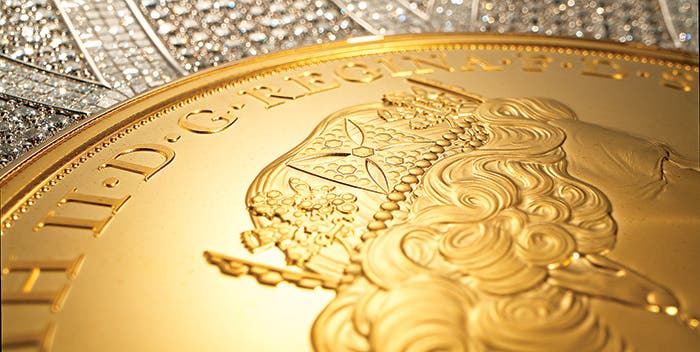Early gold coins flowed to world markets
Because American gold coins were remarkably stable in weight and value for decades, we tend to think that it has only been in modern times that the values of precious metals have fluctuated so heavily. Yet if we look back in history, we often find changes that were as unexpected in those days as the price increases are in 2006.
Over the past few months collectors have been treated to ever-increasing values for an ounce of silver or gold. Little in the way of explanation for these sudden changes has been published and it will perhaps be some time before everything sorts itself out and the uncertainty ends.
Because American gold coins were remarkably stable in weight and value for decades, numismatists tend to think that it has only been in modern times that the values of precious metals have fluctuated so heavily. Yet if we look back in history, the relationship of gold and silver has always been tenuous and we often find changes that were as unexpected in those days as the price increases are in 2006.
Both gold and silver were widely used in the Roman Empire but by A.D. 250 less and less silver was being coined, with the emphasis on gold and copper. With the collapse of the Western Roman Empire in the late fifth century, however, the multitude of small states that arose from the wreckage at first used gold but later turned to small silver coins, about the size of a modern dime though not as thick.
During the Middle Ages, as silver became easier to obtain from newly discovered mines in central Europe, governments heeded calls by merchants for larger coins. By the early 1500s silver coins much larger than the United States silver dollar were being regularly made in several mints, though by 1700 the largest silver coin was normally a taler, about the size of a modern silver dollar.
In 1783, after a long struggle, the United States became a truly independent nation but one without a system of coinage. During the 1780s the ineffectual Confederation Congress passed several laws concerning coinage and a mint, but these were hollow victories for proponents because there was no money in the Treasury to fund the new laws. All of this was to change, however, once the 1787 Constitution took effect.
At first change was slow but after April 1789, when the new federal government formally began operations, there were an increasing number of prominent personages calling for a national system of coinage. In early 1790, as the result of a petition, Congress asked Treasury Secretary Alexander Hamilton for a comprehensive plan to establish a truly American coinage.
During the remaining months of 1790 the secretary worked on this request and in January 1791 sent the 15,000 word report to the national legislators. In deciding upon the new monetary system, Hamilton had faced several thorny problems, the chief of which was the standard. Some countries used silver as the basis of value while others made gold the more important. Yet others used gold and silver equally, meaning that they had a ?bimetallic? system where neither metal was the more important.
Because bimetallism was gaining in popularity with world bankers and merchants and appeared to be headed towards widespread approval, Hamilton chose this road and prepared his report accordingly. The silver dollar was fixed at 371.25 grains of pure silver and the weight of the gold dollar was calculated by dividing that number by 15; in 1790 the international market ratio between gold and silver was 15 to 1, meaning that 15 ounces of silver would purchase one ounce of gold.
There were the usual legislative roadblocks to be overcome but in April 1792 Congress at last passed a comprehensive mint bill and it was promptly signed into law by President George Washington. Creating a law is one thing, of course, but putting it into effect is another. Coinage of silver did not begin until October 1794 while gold followed in July 1795.
While the 15-to-1 ratio established in 1792 was reasonably close to the mark, by the late 1790s it had shifted to about 15.5 to 1. This change was due to the French Revolution and the years of war in Europe that followed. If Napoleon and his empire had not existed, perhaps our monetary system would have received less stress.
Gold coins began to leave the United States, never to return, before 1800 and by 1804 the situation was serious enough that Mint Director Elias Boudinot simply refused to coin eagles ($10 gold pieces) for anyone. Apparently he felt that there was more temptation to export the large coins but this view proved illusory as half eagles ($5 pieces) were soon exported just as readily.
The loss of gold to our marketplaces was not felt all that keenly by the average citizen ? who rarely if ever saw gold coins ? but was a thorn in the side of merchants and importers who were forced to use the bulkier silver coins to pay for foreign imports.
In practical terms, the United States was on the single silver standard after about 1800 although the law read otherwise. It was for this reason that we see generally large mintages of half dollars as it was this coin that carried the load in the domestic marketplace.
The export of American gold coin accelerated during the 1820s and early 1830s. There is one report that over 40,000 half eagles were melted at the Paris Mint in the mid-1820s and there is little doubt that these meltings were relatively widespread in both England and the Continent.
Most of the gold for our own coinage actually came from melted European and Latin American coinages, especially those struck under Spain at Mexico City prior to 1821. The newly independent nations of Central and South America after the early 1820s also provided a ready source of gold coins for conversion into the American design.
Here is an 1815 gold eight escudos of the Mexico City Mint. These coins were a ready source of gold for the Philadelphia Mint. (Photos courtesy of American Numismatic Rarities.)
Some of the gold, however, did come from American mines. The first discovery was made near Charlotte, N.C., in 1799 but it was not until several years later that a significant amount of gold from this area found its way to the Philadelphia Mint. Additional quantities were later found in nearby states, primarily northeastern Georgia.
This problem with the ratio and the coinage was well understood by successive Mint directors, who lobbied Congress to change the system. However, even though he was unable at first to persuade Congress to make the necessary alterations in the basic monetary laws, Mint Director (1824-1835) Samuel Moore was determined in the meantime to improve the quality of our coinage, both of silver and gold.
In early 1829 Chief Engraver William Kneass began long-awaited changes to the gold coinage. Prior to 1829, half eagles had been manufactured in the old way: the planchet was put through a machine giving it a reeded edge and then taken to the coining press. This meant that the planchet dropped through a chute to a spot between the dies, was roughly centered, and then struck. The coins were not exactly round, but reasonably close.
The new method was revolutionary. A plain-edged planchet was dropped through the chute where it was again struck between two dies. But now there was a "close" collar just outside the dies and barely larger than the planchet itself. When the coin was struck the metal was pushed outward and the reeding was imparted to the edge by the close collar. The same system is in effect even today.
After 1829 our gold coins would have what the directors called a "mathematical equality": in other words the new coins were exactly round. It gave the coinage a better look and feel. It is interesting to note that both kinds of half eagles were struck in 1829 but their rarity is such that only a few dedicated numismatists can ever have the honor of owning both varieties for the year.
By 1831 several of the gold and silver denominations had been dealt with by the director, but some were still to go, including the all-important half dollar, which did not get its face-lift until late 1836.
There were numerous complaints in the 1820s about the lack of a circulating gold coinage but Congress virtually ignored the problem, perhaps in the hopes that the ratio would change once more, this time in our favor. Whatever the reasoning, the wishful thinking did little except to delay the needed monetary reforms.
In 1833 Congress and the Treasury finally began to seriously consider what should be done about the gold coinage. Virtually none of our gold circulated and it was still going abroad at a rapid pace. Something had to be done, and soon, if this situation was not to strangle trade with other countries.
This is a Type I 1834 half eagle. These were coined in small numbers early in 1834. (Photos courtesy of American Numismatic Rarities.)
Throughout the winter of 1833-1834 learned men argued their points in the halls of Congress. At long last, in late June 1834, a compromise mint bill was hammered out and passed for President Andrew Jackson?s signature. The gross weight of the half eagle was dropped from 135 to 129 grains, but the fineness saw an even more drastic revision, from .916 2/3 to .899225. The amount of pure gold in each piece thus dropped by more than six percent, a clear indication that Congress meant business.
The Type II 1834 half eagles were struck under the new law of 1834 and the motto was removed so that the public could tell the difference between the issues. (Photos courtesy of Ira and Larry Goldberg.)
In modern parlance, the U.S. dollar was devalued in terms of gold by six percent.
There was a limited coinage of gold, in quarter and half eagles, in the first half of 1834 on the old standard of 1792, but most of these were melted and very few have reached the hands of modern-day collectors.
After the new law was passed, Mint officials were faced with the necessity of redesigning the gold coins in such a way that the general public could easily distinguish the new gold of 1834 from the old. Mint Director Samuel Moore took the opportunity to eliminate the motto (E PLURIBUS UNUM) from the reverse of the coins. Moore had long believed that Robert Patterson, Mint director in 1807, had made a serious error when including this motto on the redesigned silver and gold coinage of 1807.
Moore considered the motto to be part of the U.S. Great Seal. The Heraldic Eagle reverses used on the silver and gold until 1807 carried the actual Great Seal reverse and thus the motto was appropriate. However, when John Reich cut the new reverse dies in 1807 it was not proper (according to Moore) because the eagle was not the same as found on the official Great Seal.
The director also believed that E PLURIBUS UNUM (?Out of many, One?) was merely another way of saying ?United States.? He consulted with leading scholars in Philadelphia and elsewhere and obtained the same opinion from them. Moore?s decision ? to eliminate the motto ? was quickly approved by the Treasury. (The motto had already been removed from the quarter dollar in 1831 for the same reason.)
The source of bullion for the new and heavier coinage was much the same as before 1834: the gold regions of North Carolina and Georgia as well as Spanish and Mexican gold coins from the mint at Mexico City, which were imported into this country in exchange for American manufactured goods. There was also a political settlement with France over long-standing maritime claims and the result was a significant amount of gold from this source.
Gold coins on the new standard of 1834 are not all that scarce except in the highest grades. Mintages were very heavy and many of the pieces were kept as bank reserves, becoming available in later years for numismatic purposes.
These heavy mintages actually caused concern at the Philadelphia Mint and the Treasury in Washington. In particular Mint Director (1835-1851) Robert M. Patterson was of the opinion that the new law of 1834 overvalued gold and the result would be that a great mass of the yellow metal would flow into the United States. The increased coinages would not be all that bad, of course, but the imbalance would undervalue silver, which would drive that metal from our shores over a period of time.
In January 1837 Congress, primarily at the urging of Dr. Patterson, passed a revised coinage law which incorporated the best points of the original 1792 legislation but used many new features to improve the monetary system. In particular the amount of pure gold was slightly increased, as was the fineness to .900. Gold coinage was now nicely balanced by the silver and both metals stayed in daily use throughout the country until a fresh disruption of the world ratio came in the late 1840s with the discovery of gold in California.




